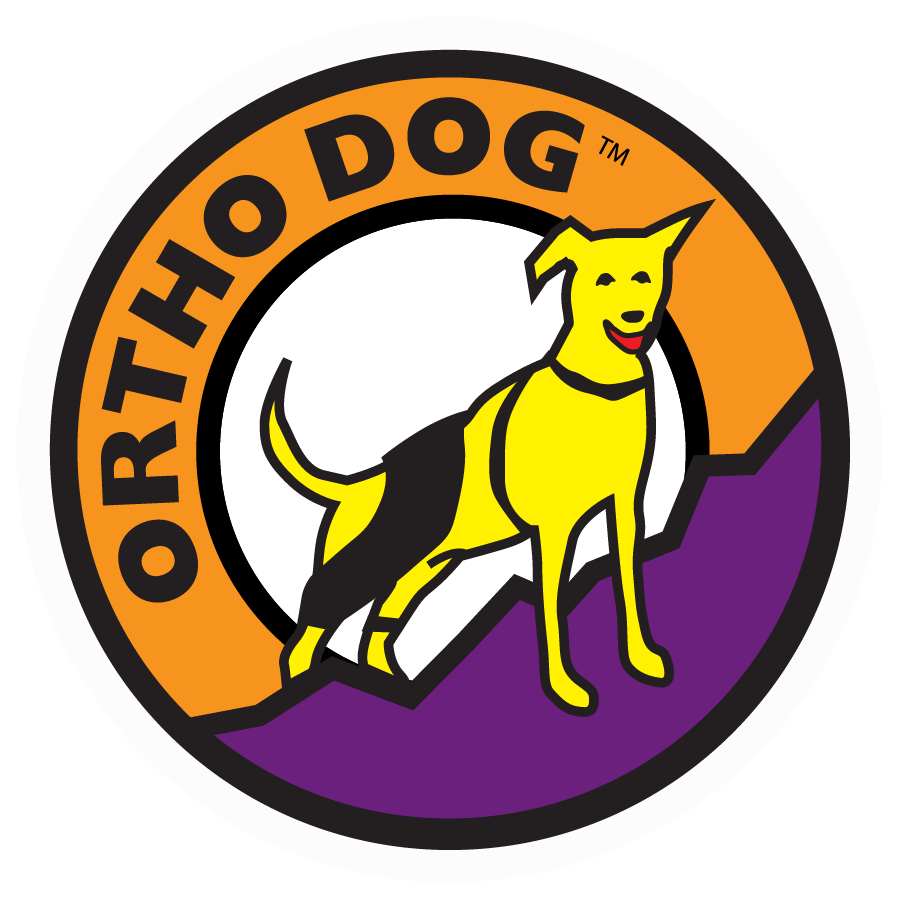Outgoing, loyal, active, affectionate, and agile, Labrador Retrievers are America’s most popular breed of dog. Their stamina, friendliness, and trainability make Labs great companion, search-and-rescue, and assistance dogs. As any Lab owner can tell you, these dogs are full of energy! Most are water enthusiasts and fetch aficionados. When active Labs can’t get enough exercise because of an injury or chronic ailment, however, no one in the house is happy.
As a dog caretaker, it can be distressing to see your energetic pup struggling to run and play because of joint problems. Due to their sizable frame, weight distribution, and genetic predisposition to the disease, Labrador retrievers, German shepherds, Pitbulls, Great Danes and Saint Bernards are prone to canine hip dysplasia (CHD), a chronic, inheritable skeletal condition that can affect dogs of all ages.
Signs of Hip Dysplasia in Labs
Lab hip dysplasia is a malformation of the hip joint where the head of the femur bone doesn’t fit precisely into the hip socket. Instead of fitting together normally and sliding smoothly, pieces of the joint (the ball and socket) painfully rub together. As there is a loss of cartilage over time, this condition can result in chronic pain in the hip joint, lameness, or long-term degenerative joint disease (osteoarthritis).
Early detection is key to the most successful treatment. CHD can result in osteoarthritis and loss of muscle mass because of reduced mobility. If your Lab isn’t getting the exercise he usually does, he will lose strength over time.

As with other breeds, Labrador retriever hip dysplasia can have a gradual or sudden onset. Symptoms include:
- Limping, favoring a back leg
- Hind leg lameness
- Showing stiffness
- A froggy sit
- A bunny hopping gait or loose walk.
- Trouble getting up from a nap
- Difficulty walking up or down stairs to greet you.
Other common Lab joint problems include osteoarthritis (from old age and not necessarily hip dysplasia) and elbow dysplasia, which can result in lameness of the front legs.
Always consult your veterinarian if you see the symptoms of Labrador hip dysplasia. X-rays and a full exam are necessary for proper diagnosis.
Labrador Hip Dysplasia Surgery
If your dog’s case is medium to severe, your veterinarian may refer you to an orthopedic surgeon to discuss surgical options. Dog hip dysplasia surgery for severe cases in medium-to large-sized dogs can be expensive. Options include Triple Pelvic Osteotomy (pelvis is cut in three places), Femoral Head Osteotomy (removal of the ball of the hip joint in mature dogs), and Juvenile Pubic Symphysiodesis (fusion of cartilage connecting the two sides of the pelvis in puppies), which can each run from about $1,000 to $3,000 per hip. Total Hip Replacement (prosthetic replacements) is the most expensive at $3,500–$7,000 per hip.
In most cases, rehabilitation services can also be costly and postoperative care can be long and arduous. Age may keep your dog from being a good candidate for surgery. Non-surgical treatment options often have no age restrictions.
Labrador Hip Dysplasia Home Remedy
If invasive surgery is not be the best choice to treat your Labrador retriever’s hip dysplasia, look into non-surgical, conservative management options, such as physical therapy, canine chiropractic, weight control, acupuncture, anti-inflammatories, and massage therapy. Glucosamine support the body’s process of repairing tissues and fish oils can help lubricate the joints.
Dog Hip Brace
Canine orthopedic braces may slow the progression of this chronic issue by minimizing pressure on your Lab’s joints. Dog hip braces, such as the Ortho Dog Hip Hound brace, support the low back and hip area for mild to moderate hip dysplasia. The purpose of the Hip Hound brace is to stabilize the hip and lower back areas by holding the head of the femur in the hip socket. This reduces grating of the bone, which allows for post-surgical healing or pain-free exercise. Braces come in all sizes so you can find one that is perfect for your pet and allows for maximum support.

Is a Hip Hound Brace right for your pup?
Designed for dogs who suffer from arthritis and mild to moderate hip dysplasia.
All of Ortho Dog’s braces are waterproof so they’re designed to be worn while your dog is swimming or undergoing hydrotherapy.
Since Labs are prone to joint issues, your dog may be diagnosed with elbow dysplasia (Fragmented medial coronoid process). According to the Universities Federation for Animal Welfare, about 17-21% of Labs are affected by elbow dysplasia. A veterinarian we work with has used the Ortho Dog Hock Holder brace for the hind leg over the elbow joint. We recommend you give it a try!
Hydrotherapy
The Canine Hydrotherapy Association reports that “muscle wastage begins within three days of any immobilization so to prevent further weakness or injury it is important to rebuild, through safe exercise, any muscles that have deteriorated.” Taking place in a heated pool or aquatic treadmill, hydrotherapy improves muscle tone and promotes tissue repair. This breed already loves water so much, you may not be able to get them to stop swimming!

Whether you opt for surgery, non-invasive treatment options, or a combination of the two to treat your Labrador retriever’s hip dysplasia, we hope your furry friend finds fast and lasting relief. We know he’s looking forward to that next game of fetch!

